California, renowned for its diverse ecosystems, ranging from the arid Mojave Desert to the lush Redwood and Douglas-fir forests, is a gardener’s paradise.
Thanks to its unique climate and geography, an astonishing variety of flowers bloom here, some found nowhere else on earth.
As a Californian resident with an insatiable passion for flora, I’m thrilled to share with you the rich tapestry of blooms that grace this Golden State.
What Flowers Grow In California?
- California Lilac (Ceanothus)
- Red Hot Poker (Kniphofia uvaria)
- Matilija Poppy (Romneya coulteri)
- Indian Paintbrush (Castilleja)
- California Pitcher Plant (Darlingtonia californica)
- Mountain Pride (Penstemon newberryi)
- California Manroot (Marah fabaceus)
- California Poppy (Eschscholzia californica)
- Humboldt Lily (Lilium humboldtii)
- Scarlet Bugler (Penstemon centranthifolius)
- Chinese Houses (Collinsia heterophylla)
- Hummingbird Sage (Salvia spathacea)
- Sea Dahlia (Leptosyne maritima)
- California Lady’s Slipper (Cypripedium californicum)
- Mission Bells (Fritillaria biflora)
- Bush Sunflower (Encelia californica)
- Elegant Clarkia (Clarkia unguiculata)
- Sticky Monkey Flower (Mimulus aurantiacus)
- Mariposa Lily (Calochortus spp.)
- Torrey’s Pine (Pinus torreyana)
- Baby Blue Eyes (Nemophila menziesii)
- Fairy Lantern (Calochortus albus)
- Coast Buckwheat (Eriogonum latifolium)
- Blue-Eyed Grass (Sisyrinchium bellum)
- Purple Owl’s Clover (Castilleja exserta)
- Yellow Mariposa Lily (Calochortus luteus)
- Toyon (Heteromeles arbutifolia)
California Poppy (Eschscholzia californica)
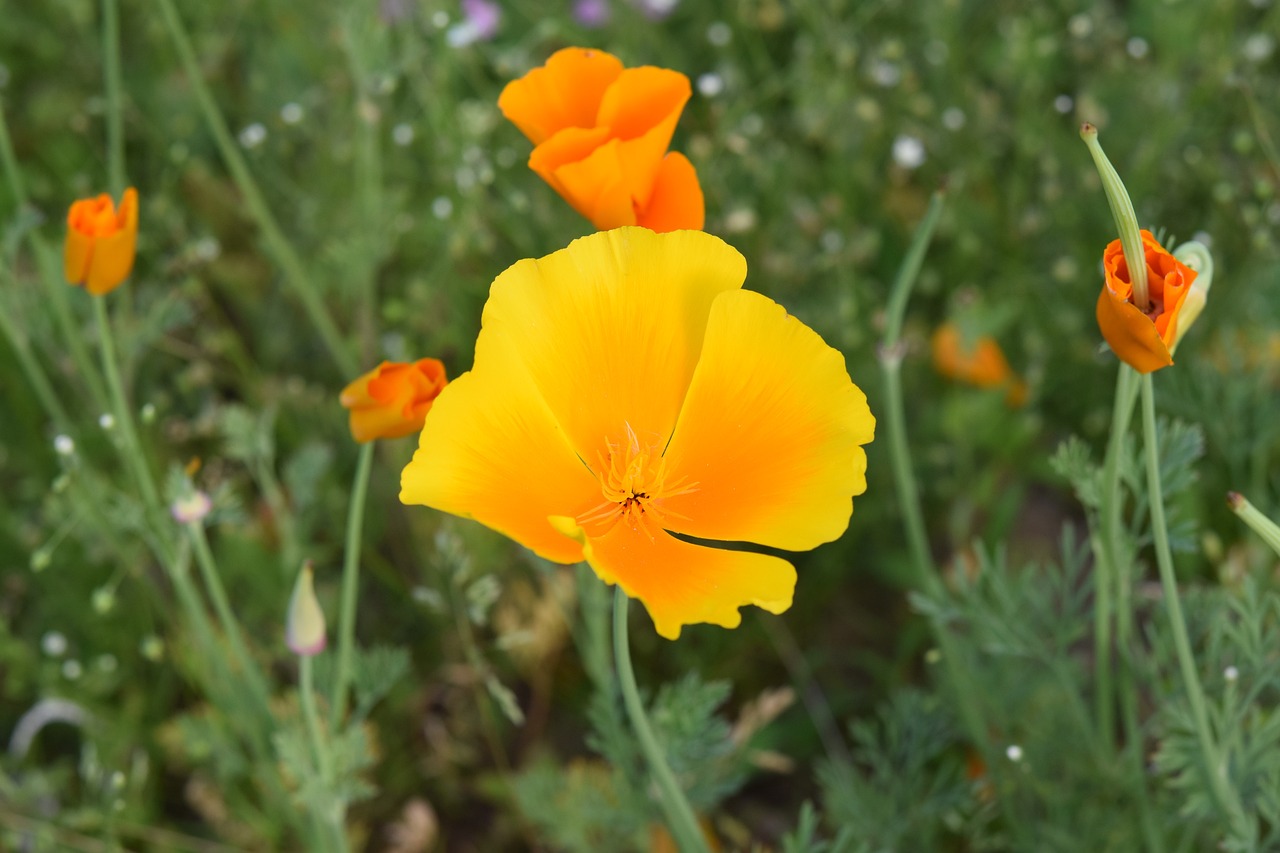
The California Poppy, the state flower, is a brilliant sight to behold.
With its bold, orange petals that resemble a teacup when in full bloom, this flower is instantly recognizable.
Typically, the poppies bloom from February to September, painting the state with a delightful orange hue.
They prefer well-drained soils and are often found in open areas, bringing an undeniable charm to the Californian landscape.
Interestingly, the California Poppy closes its petals during cloudy, rainy days and in the evening. Moreover, it’s a potent symbol of California’s natural wealth, being designated as the state flower in 1903.
Matilija Poppy (Romneya coulteri)

Often referred to as the ‘Queen of California Flowers’, the Matilija Poppy is an incredibly beautiful native species.
Its large, white petals and bright yellow center give the impression of a fried egg.
These perennials usually bloom from May through July and are found in dry, open spaces in southern California.
With their ability to reach up to eight feet in height and their affinity for wildfire regrowth, Matilija Poppies are true survivors, embodying the resilient spirit of Californians.
Their distinctive look and size make them a wonderful choice for garden enthusiasts looking to make a statement.
California Lilac (Ceanothus)
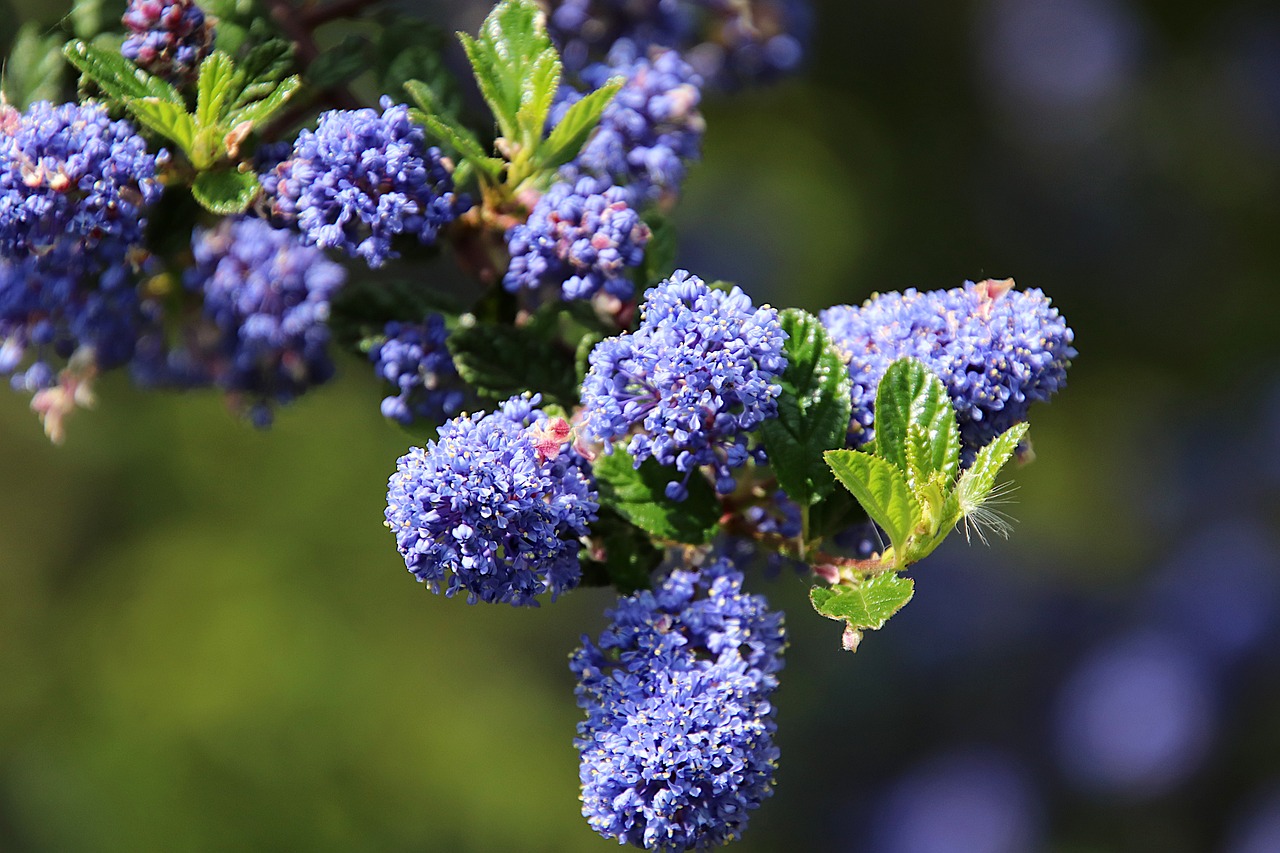
California Lilac, or Ceanothus, brings a stunning splash of blue to the Californian landscape.
The flowers, which range from deep blue to lavender, typically bloom from late winter to early spring, adding a magical touch to the end of winter’s chill.
Often found on dry, sunny hillsides and coastal areas, these shrubs play a crucial role in native ecosystems as they fix nitrogen in the soil, enriching it for other plant species.
Their fragrant blossoms are also a favorite among pollinators, making them an excellent choice for eco-conscious gardeners.
Hummingbird Sage (Salvia spathacea)

This charming plant gets its name from the hummingbirds it invariably attracts.
The Hummingbird Sage displays eye-catching, tubular magenta flowers that stand out against its grey-green foliage.
It typically blooms from March to May, often carpeting the understory of coastal sage scrub and dry oak woodlands.
Adding to its uniqueness, the Hummingbird Sage has an enchanting fragrance with notes of ripe fruit and spice.
This aroma, along with its vibrant color, makes it a beloved stop for hummingbirds in search of nectar.
California Buttercup (Ranunculus californicus)
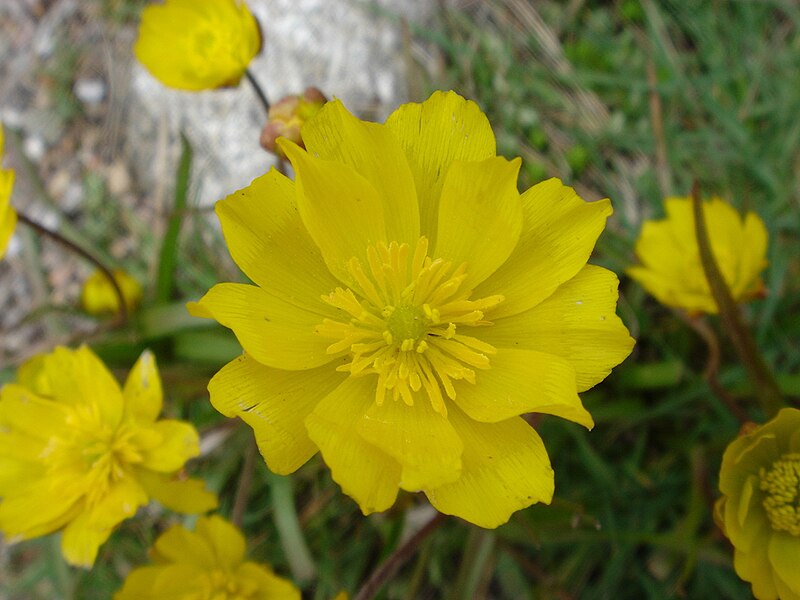
The California Buttercup, with its cheerful, yellow flowers, is a delightful presence in the Californian landscape.
They usually bloom from February to May, preferring grasslands and open woodland habitats.
The glossy petals of this charming wildflower can reflect UV light, making it highly attractive to pollinators.
This trait, along with its long blooming period, helps breathe life into the ecosystem after a long winter.
Sticky Monkey Flower (Mimulus aurantiacus)
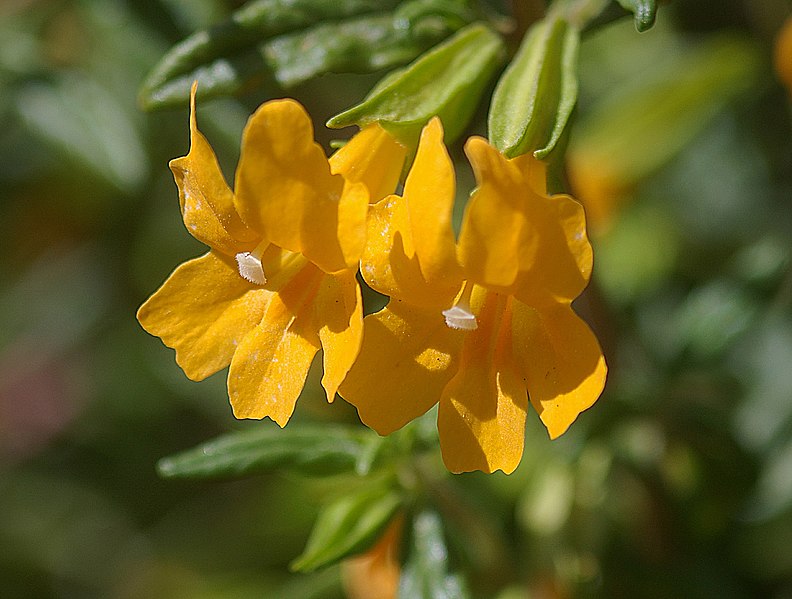
The Sticky Monkey Flower, an intriguingly named California native, boasts tubular flowers in shades of vibrant orange to pale yellow.
Blooming from April to August, it is a common sight in coastal scrub and chaparral environments, particularly in the southern regions of the state.
The plant gets its unusual name from the leaves’ sticky texture, which helps protect it from dehydration and predation.
Its nectar-rich flowers attract hummingbirds, making it a lively addition to the garden.
Coast Sunflower (Helianthus californicus)
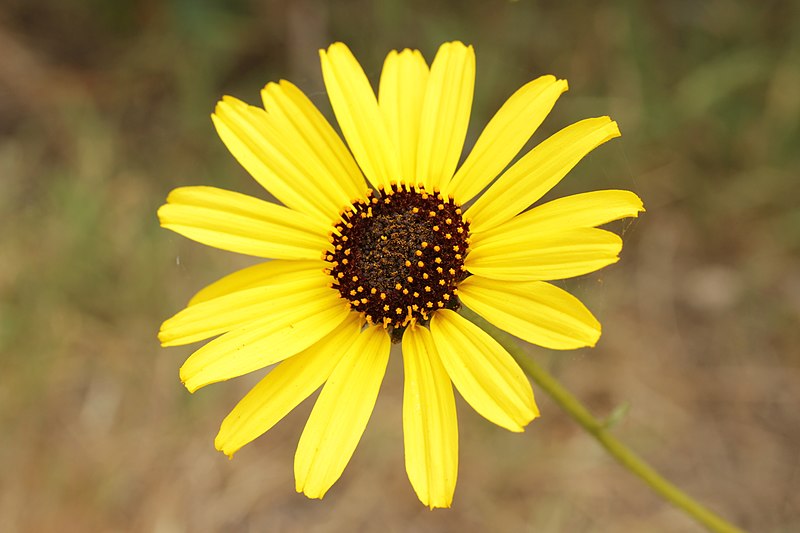
The Coast Sunflower, true to its name, illuminates the Californian landscape with its radiant yellow blooms.
The flowers, which appear from May to November, are a magnet for bees, butterflies, and other pollinators.
Coast Sunflowers are typically found in coastal scrub and chaparral environments, adding a sunny disposition to the landscape.
It’s worth noting that these perennials are incredibly resilient, capable of withstanding drought and salty soils, embodying the tenacious spirit of the Golden State.
Mariposa Lily (Calochortus)
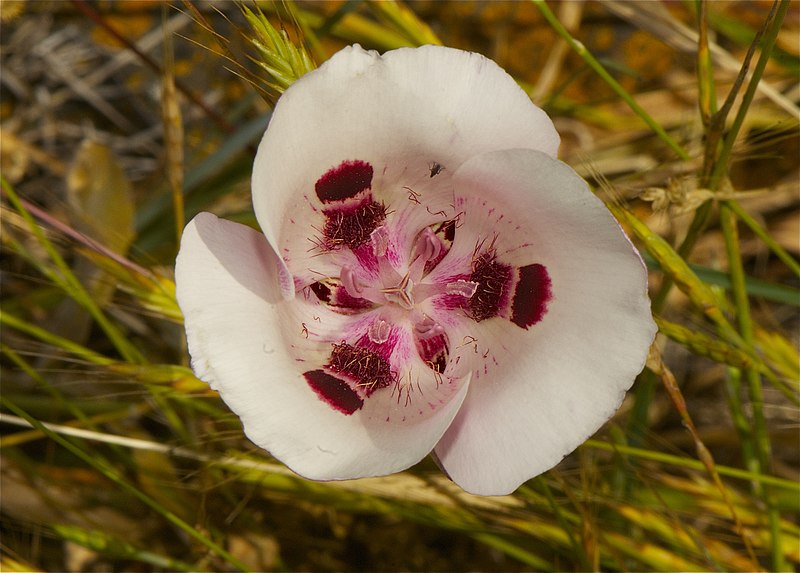
The Mariposa Lily is one of California’s most exquisite wildflowers.
These delicate, tulip-like flowers come in a range of colors, from vibrant purples and pinks to pristine whites, often with intricate markings on the petals.
Blooming primarily in late spring and summer, they inhabit various environments including grasslands, open woodlands, and mountain slopes.
Mariposa Lilies have an interesting relationship with native bees.
Their petal structure promotes a special kind of pollination called ‘buzz pollination’, where the bee vibrates at a specific frequency to release the flower’s pollen.
This unique adaptation is a testament to the complex web of life woven by California’s native flowers.
Douglas Iris (Iris douglasiana)
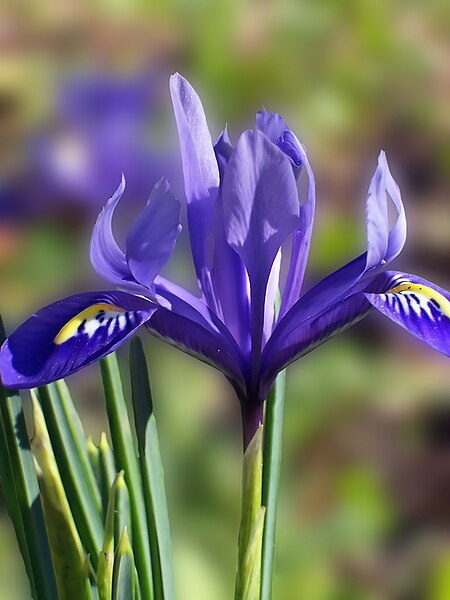
The Douglas Iris is a delightful, hardy perennial that paints the coastal meadows of California with shades of purple and blue from March to June.
The iris typically has three downward-facing sepals, or ‘falls’, and three upward-facing petals, forming an elegant, intricate blossom.
Often found in the moist soils of meadows, coastal scrub, and forests, the Douglas Iris provides a pop of color to the understory.
This flower also has a rich history, with Native American tribes using its tough leaves to weave into ropes and its roots as a medicinal tea.
California Fuchsia (Epilobium canum)
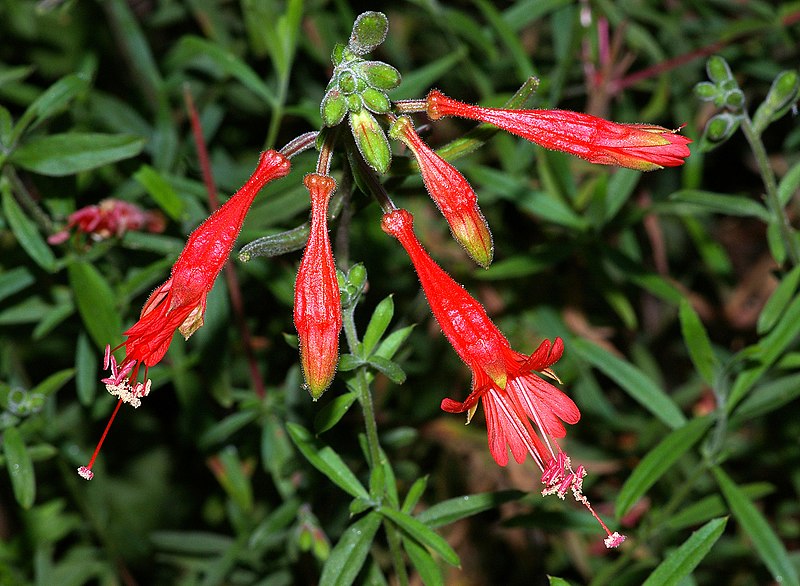
The California Fuchsia, with its vibrant, tubular red flowers, is an end-of-summer spectacle.
Blooming from late summer to autumn, it offers a critical late-season nectar source for hummingbirds and bees.
This low-growing perennial is typically found in dry slopes and chaparral of coastal California and the Sierra Nevada.
Interestingly, its leaves are coated with a layer of tiny hairs, giving them a grayish appearance and helping the plant conserve water, a valuable trait in California’s Mediterranean climate.
Baby Blue Eyes (Nemophila menziesii)
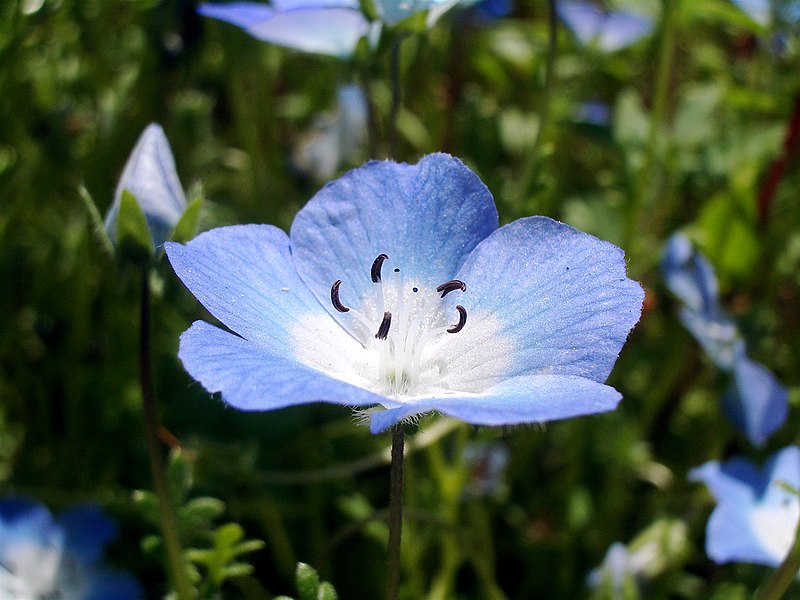
Baby Blue Eyes is an annual wildflower that enchants onlookers with its soft, sky-blue flowers.
Native to California, it blooms from February to May, creating a delicate carpet of color in meadows, woodland edges, and coastal bluffs.
This flower has a captivating trait: the petals are so intensely blue, they appear to glow.
This visual effect is thought to help attract pollinators to the flower’s central white ‘eye’, enhancing pollination efficiency.
One unique feature of Baby Blue Eyes is that their delicate blossoms tend to close in the afternoon heat, opening again the next morning.
This subtle adaptation allows these flowers to conserve their resources during the hotter parts of the day.
California Buckeye (Aesculus californica)

The California Buckeye is a native deciduous tree that produces showy, fragrant clusters of pale white to pink flowers from April to July.
These conical flower clusters are a favorite amongst bees and butterflies, making the Buckeye an important player in the ecosystem.
While its flowers are undoubtedly beautiful, the Buckeye has an intriguing survival strategy during California’s dry summer months – it sheds its leaves to conserve water, leaving behind its skeletal, silver-gray branches and large, round seeds.
The seeds, while toxic to many animals, were used by Native American tribes as a source of fish poison.
Western Azalea (Rhododendron occidentale)
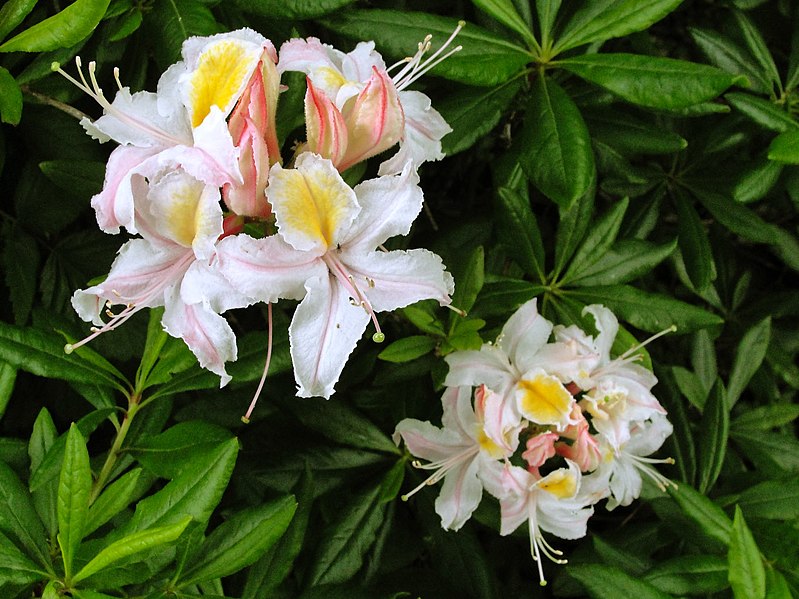
The Western Azalea is a spectacle to behold when in full bloom from April to July.
Its large, fragrant flowers showcase a dazzling array of colors, from pure white to blushing pink, often with a bright yellow spot.
This deciduous shrub is usually found in the damp, shady areas of woodlands and along streams.
An interesting trait of the Western Azalea is that its leaves turn a beautiful range of colors in the fall, providing a secondary show of color in your garden.
The flowers are also known to attract butterflies, adding a lively touch to its surroundings.
California Bluebell (Phacelia campanularia)
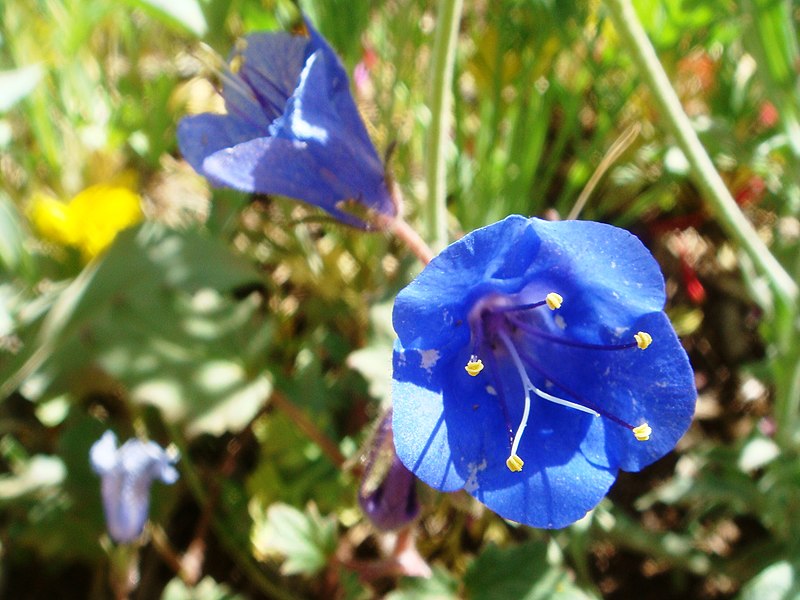
The California Bluebell is an annual wildflower that offers a brilliant display of deep blue, bell-shaped flowers from February to May.
Found in the desert and valley grasslands, this plant brings a splash of color to arid regions.
Not only do these flowers add beauty to the landscape, but they also play a crucial role in local ecosystems.
The California Bluebell’s blooms are a source of nectar for bees, butterflies, and other pollinators, contributing to biodiversity and ecological balance.
California Wild Rose (Rosa californica)
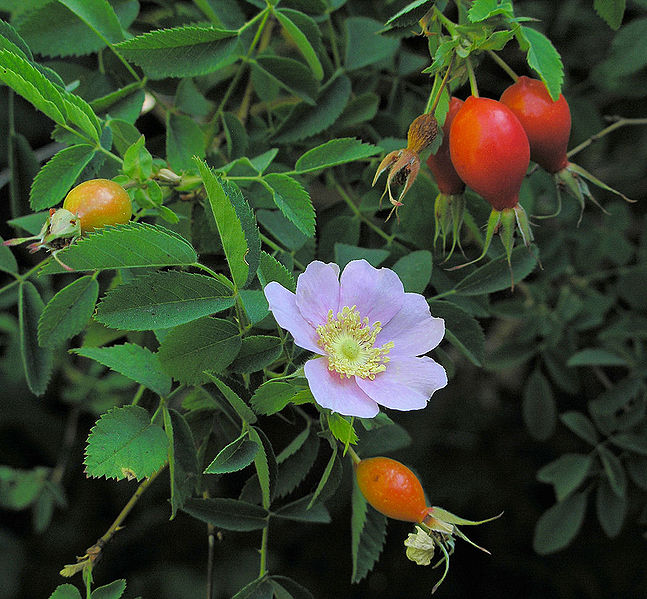
The California Wild Rose, with its pink, fragrant flowers, is a delightful native species that blooms from May to September.
You’ll find this perennial shrub in various habitats, from moist valleys to woodland edges.
Each flower has five petals surrounding a cluster of yellow stamens, creating a charming and rustic beauty.
After the bloom, the plant produces red-orange rose hips, which are not only visually appealing but also a valuable food source for birds and other wildlife.
Tidy Tips (Layia platyglossa)
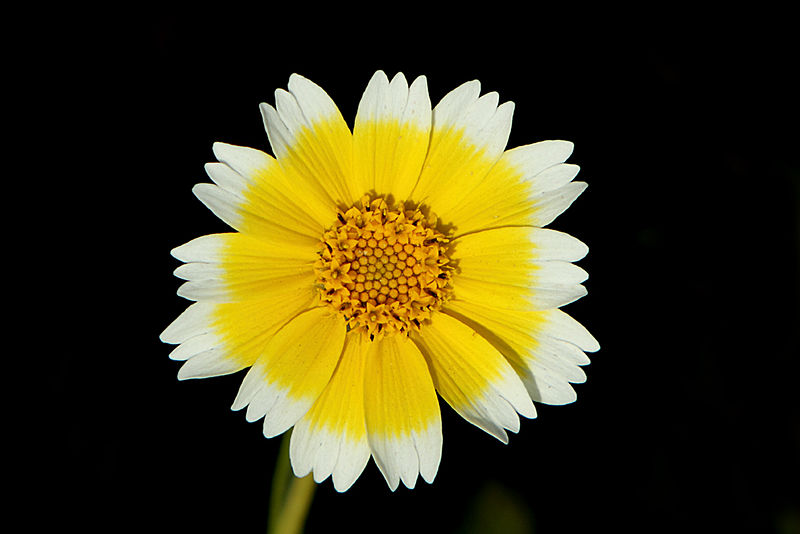
The Tidy Tips is an annual wildflower that brings a burst of joy to the California springtime.
Its daisy-like flowers, with vibrant yellow tips and white bases, create a stunning contrast that stands out in grassland and open woodland habitats.
Blooming from March to June, Tidy Tips is one of the many springtime wildflowers that participate in the ‘super bloom’ phenomenon, where a variety of wildflowers bloom en masse, painting the landscape in an explosion of color.
This event, while reliant on the year’s rainfall, is a breathtaking sight that showcases California’s rich floral diversity.
Channel Island Tree Poppy (Dendromecon harfordii)
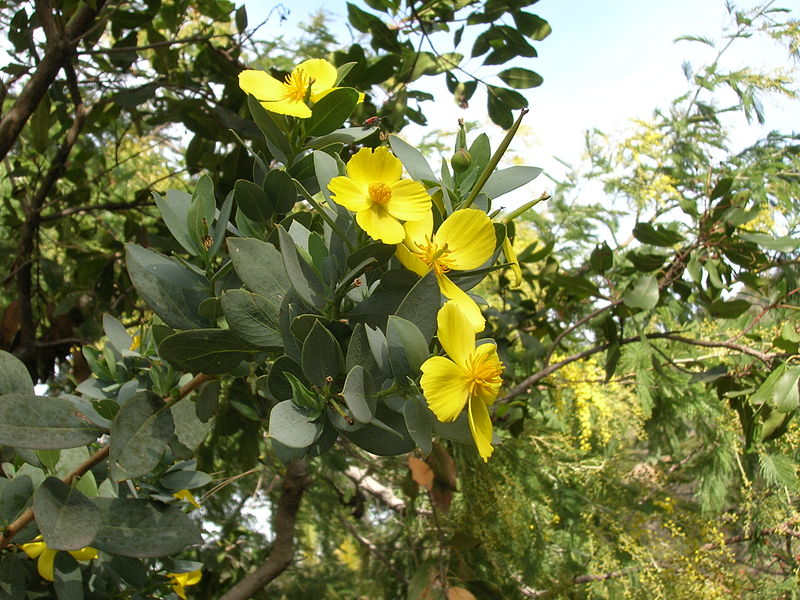
The Channel Island Tree Poppy, or Island Bush Poppy, is an evergreen shrub native to the Channel Islands of California. Its bright yellow, poppy-like flowers bloom throughout the year, providing a cheerful splash of color against its grey-green foliage.
This resilient plant thrives in poor, dry soils and full sunlight, making it an excellent choice for California gardens.
The Tree Poppy also plays a crucial role in supporting native wildlife, attracting a variety of pollinators with its nectar-rich flowers.
Showy Penstemon (Penstemon spectabilis)
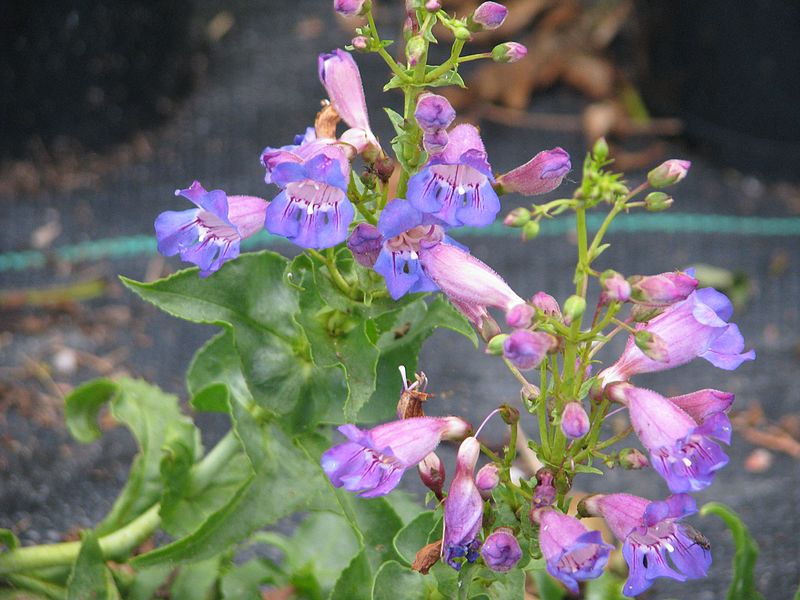
Showy Penstemon, as the name suggests, puts on an impressive display of deep purple to violet tubular flowers from March to June.
It’s a native perennial found in dry, open areas of the coastal sage scrub and chaparral communities.
The tubular structure of the flowers is particularly attractive to hummingbirds, who serve as their primary pollinators.
Showy Penstemon’s vibrant color and distinctive shape add a unique element of interest to any native Californian garden.
Yerba Mansa (Anemopsis californica)
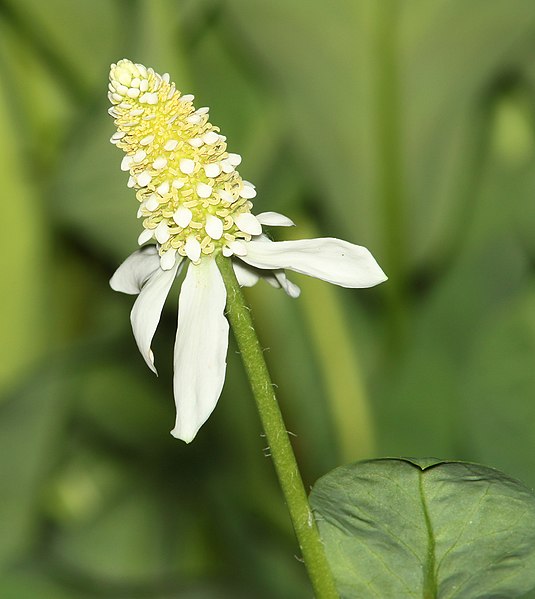
Yerba Mansa, or Lizard Tail, is a unique, low-growing perennial native to the wetlands of California.
From May to July, it presents distinctive cone-shaped flower clusters surrounded by white, petal-like bracts that can give the illusion of a single, large flower.
Historically, Yerba Mansa was a valuable medicinal plant for many Native American tribes, used to treat a variety of ailments.
It’s a wonderful choice for water gardens or damp areas, where it can form dense colonies of intriguing blossoms.
Woolly Bluecurls (Trichostema lanatum)
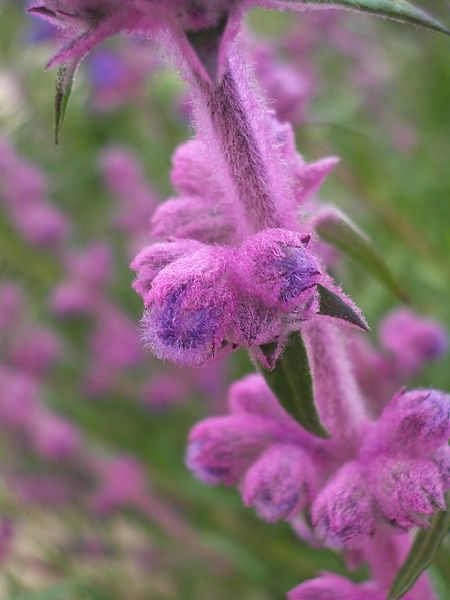
The Woolly Bluecurls is a visually striking shrub that produces clusters of curly, blue-violet flowers from April to August.
It’s typically found in the chaparral and coastal sage scrub habitats of southern California.
One of the most fascinating aspects of Woolly Bluecurls is its intoxicating fragrance, described as a mix of lavender and sage, which becomes more pronounced when the leaves are crushed.
This scent, along with its showy flowers and attractive grey-green foliage, makes it a popular choice among gardeners and pollinators alike.
Indian Paintbrush (Castilleja)
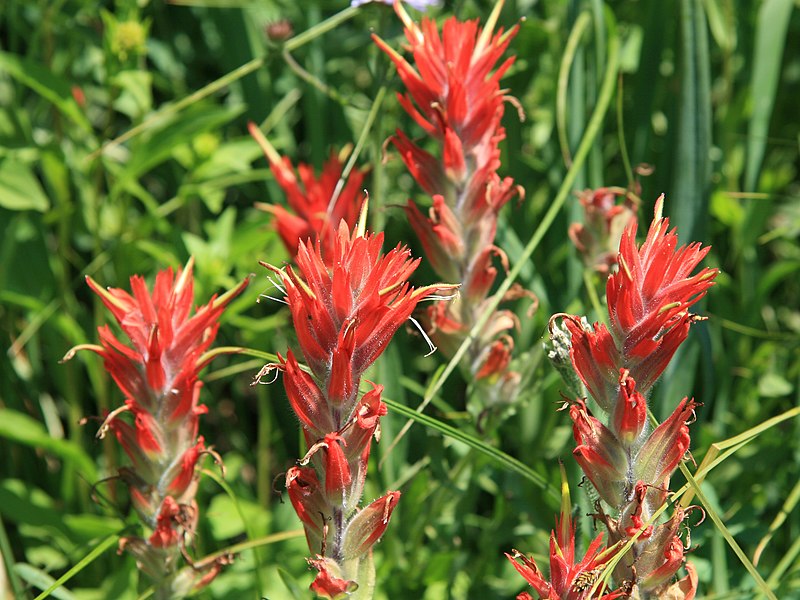
Indian Paintbrush, also known as Prairie Fire, is a wildflower that adds a striking burst of red, orange, or pink to the Californian landscape.
Blooming from April to September, it’s commonly found in meadows, grasslands, and desert washes.
What’s unique about Indian Paintbrush is its semi-parasitic nature.
It extracts nutrients and water from other plants’ roots, allowing it to thrive in harsh conditions.
This unusual trait has earned it a fascinating reputation in the botanical world.
California Pitcher Plant (Darlingtonia californica)

The California Pitcher Plant, also known as Cobra Lily, is one of the few carnivorous plants native to North America.
It’s found in bogs and seepage areas with cold running water. The plant forms pitcher-shaped leaves that trap and digest insects.
Its peculiar shape, with a bulbous top resembling a snake’s head, makes it a fascinating addition to any flora-focused discussion.
The Cobra Lily typically blooms from April to July, producing greenish-yellow flowers that hang upside down from tall stems.
Mountain Pride (Penstemon newberryi)
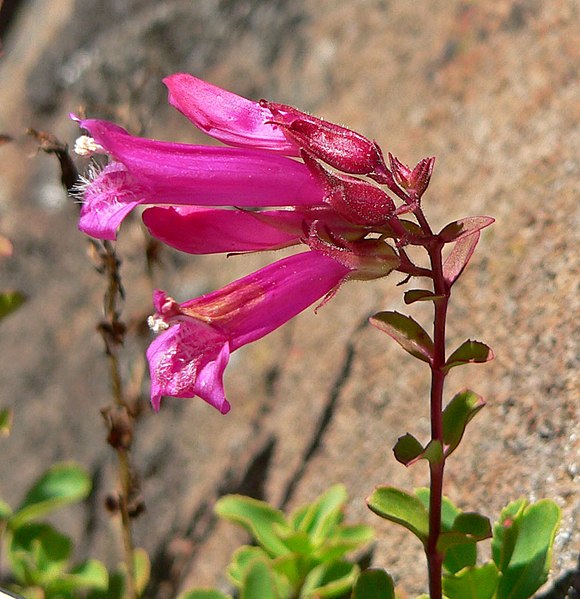
Mountain Pride is a perennial wildflower that graces the rocky slopes and cliffs of California’s mountain ranges.
From June to August, it produces clusters of vibrant pink to purple, tubular flowers.
One of its unique characteristics is its adaptability to poor, rocky soil. In fact, its deep root system helps it to survive in arid, harsh conditions.
This flower’s bright colors and high nectar content make it a favorite among hummingbirds.
California Manroot (Marah fabaceus)
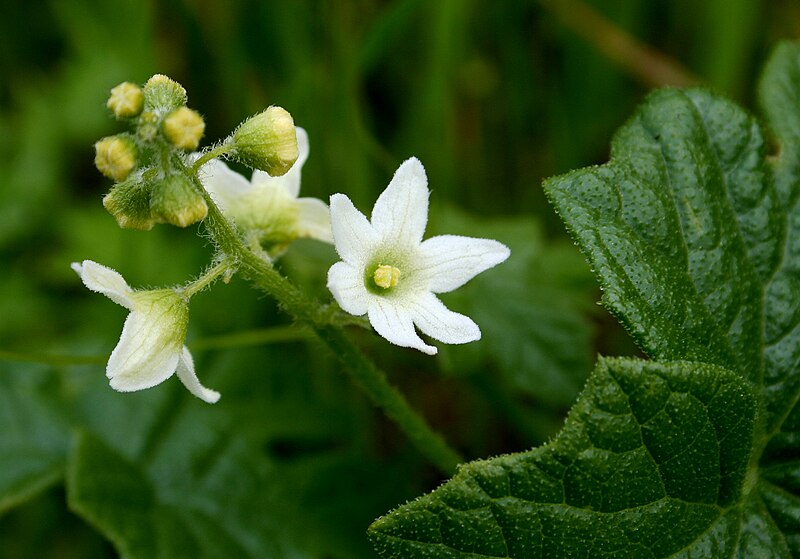
California Manroot, or Wild Cucumber, is a perennial vine native to California. From February to May, it displays small, white to greenish-yellow flowers.
Although not as flashy as other California natives, the Manroot has a charm of its own.
One unique aspect of this plant is its large, spiky, cucumber-like fruits, which give the plant its common name.
However, unlike its namesake, the Manroot’s fruit is not edible and is, in fact, toxic. It’s also known for its huge, underground tuber, which can weigh up to 200 pounds!
Humboldt Lily (Lilium humboldtii)
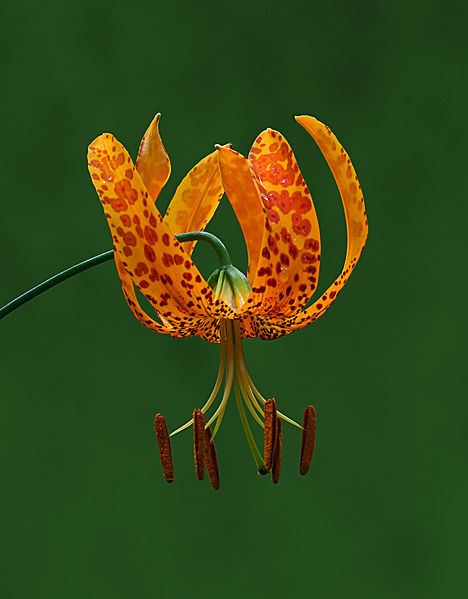
The Humboldt Lily is a true spectacle to behold. Standing tall with stems reaching up to 6 feet in height, it displays large, trumpet-shaped flowers in a vibrant orange speckled with burgundy spots.
Typically, it blooms from June to July in the mixed-evergreen and oak woodland habitats of California.
This stunning lily has a special ecological role as it provides nectar for hummingbirds, who in turn help pollinate the flowers.
It’s a splendid example of the co-evolutionary relationships that exist within California’s rich ecosystems.
Scarlet Bugler (Penstemon centranthifolius)
The Scarlet Bugler, a member of the Snapdragon family, brings a touch of drama to the Californian landscapes.
Its brilliant, tubular, red flowers bloom from May to July, making it a magnet for hummingbirds who play a vital role in their pollination.
Adapted to the dry, open spaces of coastal scrub and chaparral environments, this perennial wildflower is a testament to the resilience and beauty of California’s native flora.
Chinese Houses (Collinsia heterophylla)
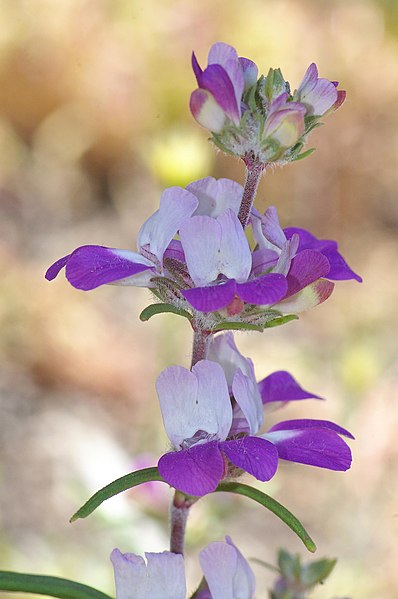
Chinese Houses, named for their tiered, pagoda-like flower clusters, are charming annual wildflowers native to California.
Their delicate, white to purple flowers bloom from March to June, adding a whimsical touch to meadows and woodland edges.
These flowers have a fascinating adaptation that promotes their survival.
The lower flowers in each tier are primarily female and bloom first, ensuring they can produce seed even if pollinators are scarce.
This kind of flexibility is an example of the incredible adaptations found within the California wildflower kingdom.
Hummingbird Sage (Salvia spathacea)
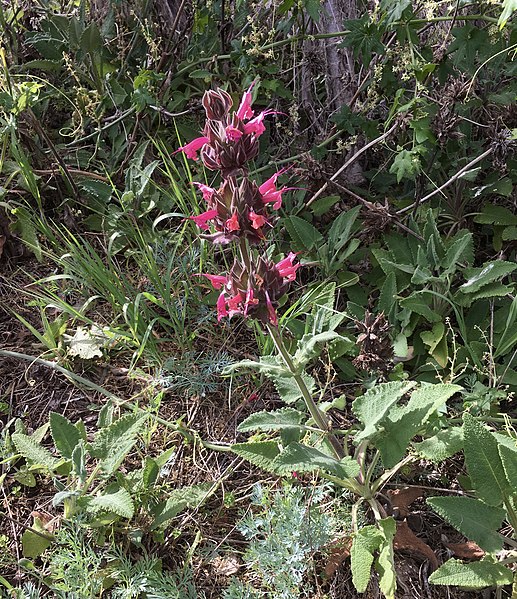
The Hummingbird Sage, as its name suggests, is a hummingbird’s delight.
This fragrant perennial boasts beautiful, tubular magenta flowers that appear from March to May. It thrives under the dappled sunlight of coastal sage scrub and oak woodland habitats.
This low-growing sage releases a captivating scent, described as a mix of ripe fruit and warm sage, making it a favorite among gardeners.
As its common name implies, the Hummingbird Sage is an essential nectar source for hummingbirds, underscoring the plant’s ecological value.
Sea Dahlia (Leptosyne maritima)
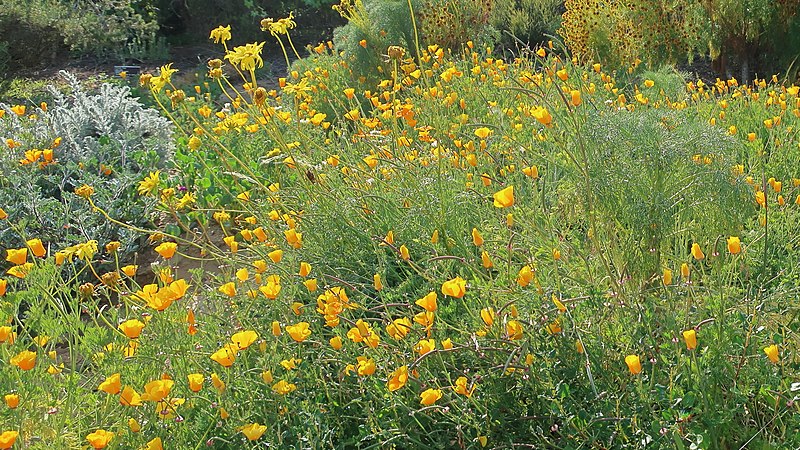
The Sea Dahlia is a coastal native that lights up the coastal bluffs with its sunny, yellow daisy-like flowers.
Blooming from February to July, it’s one of the many vibrant species found in the coastal sage scrub community.
Interestingly, despite its delicate appearance, the Sea Dahlia is highly adapted to its rugged, windswept environment.
It’s drought-tolerant and salt-tolerant, making it an excellent candidate for seaside gardens.
California Lady’s Slipper (Cypripedium californicum)
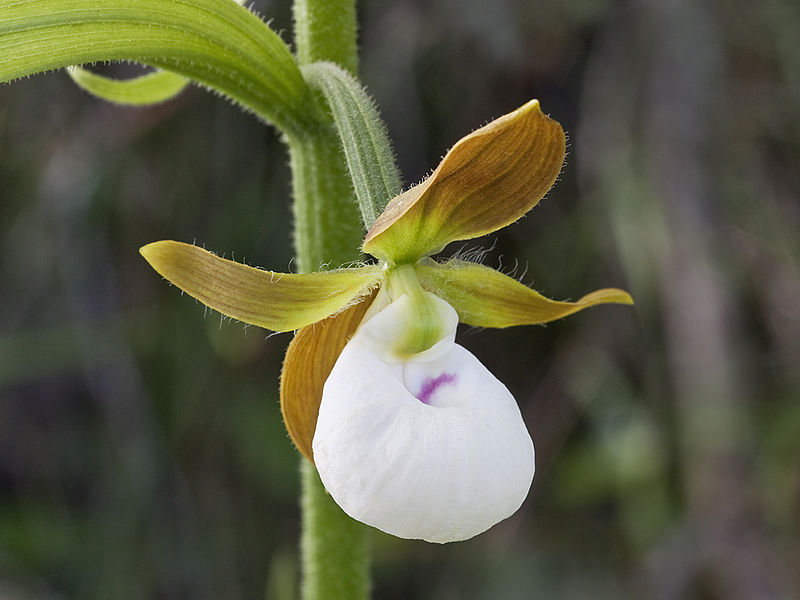
The California Lady’s Slipper is one of the state’s few native orchids.
Found primarily in the shaded, moist areas of woodlands, this perennial produces large, white to cream-colored flowers with a unique, pouch-like petal – the ‘slipper’ that gives the plant its name.
This orchid typically blooms from May to July and has a mutualistic relationship with certain fungi, which help the plant absorb nutrients from the soil.
This intricate partnership exemplifies the complex interactions within California’s ecosystems.
Bush Sunflower (Encelia californica)
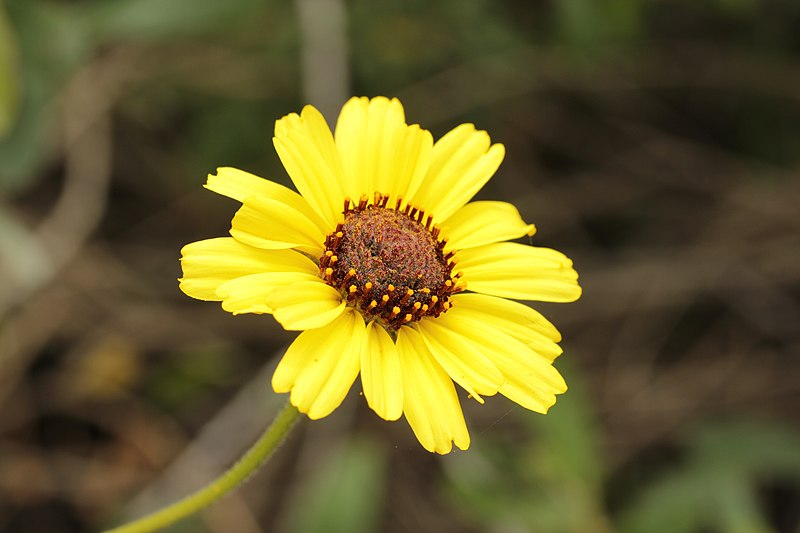
The Bush Sunflower is a cheerful, sun-loving perennial that paints the chaparral and coastal sage scrub communities with its vibrant yellow, daisy-like flowers.
This plant typically blooms from February to June, adding a burst of color to California’s landscapes.
One unique aspect of the Bush Sunflower is its drought-deciduous nature. To conserve water during periods of drought, it will shed its leaves and remain dormant until more favorable conditions return.
Elegant Clarkia (Clarkia unguiculata)
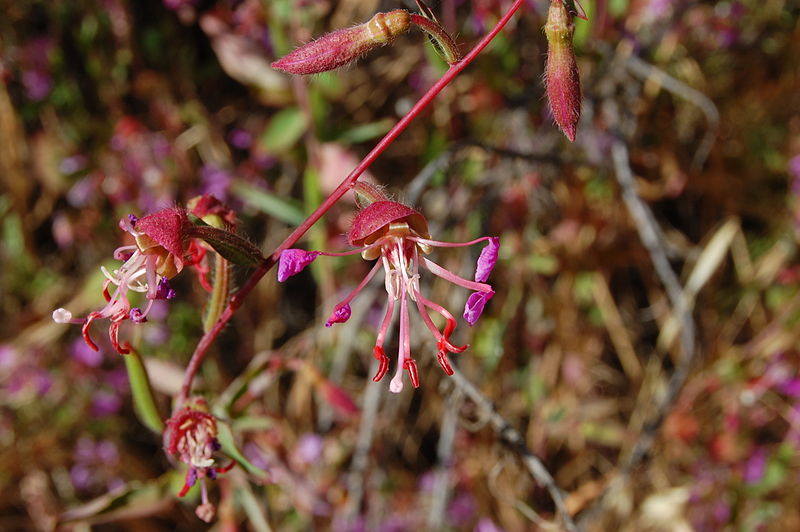
The Elegant Clarkia is an annual wildflower that presents an elegant display of pink to purple, four-petaled flowers from May to July.
It’s commonly found in open woodland habitats.
One of the intriguing aspects of Clarkia flowers is that they don’t open fully.
Instead, the petals form a sort of cage around the reproductive parts of the flower, a structure that is thought to facilitate cross-pollination by insects.
Mariposa Lily (Calochortus spp.)
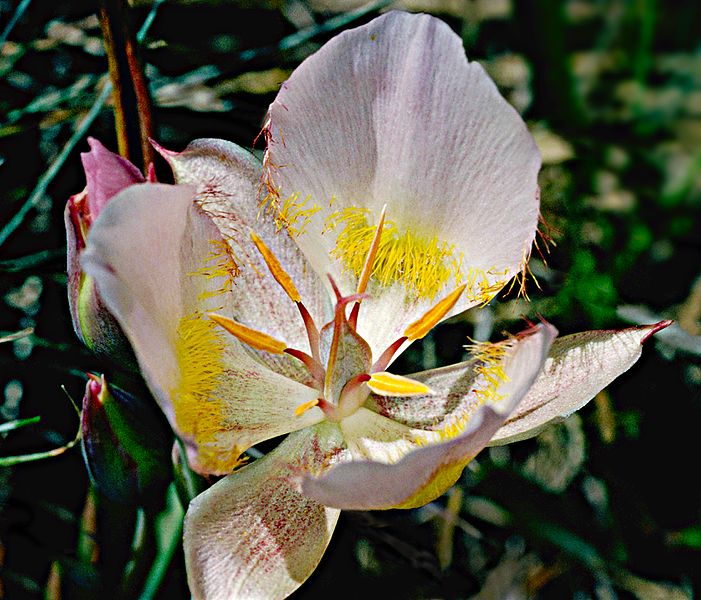
Mariposa Lilies are a group of perennial wildflowers that brighten California’s grasslands and woodlands with their distinct, cup-shaped flowers.
Depending on the species, they can bloom anytime from April to July, showcasing a spectrum of colors from pure white to vibrant orange and pink.
These lilies are named after the Spanish word for butterfly (‘mariposa’) because their beautiful, often spotted petals are reminiscent of a butterfly’s wings.
Many species also have a contrasting nectar guide that helps pollinators find their way to the flower’s nectar.
Fairy Lantern (Calochortus albus)
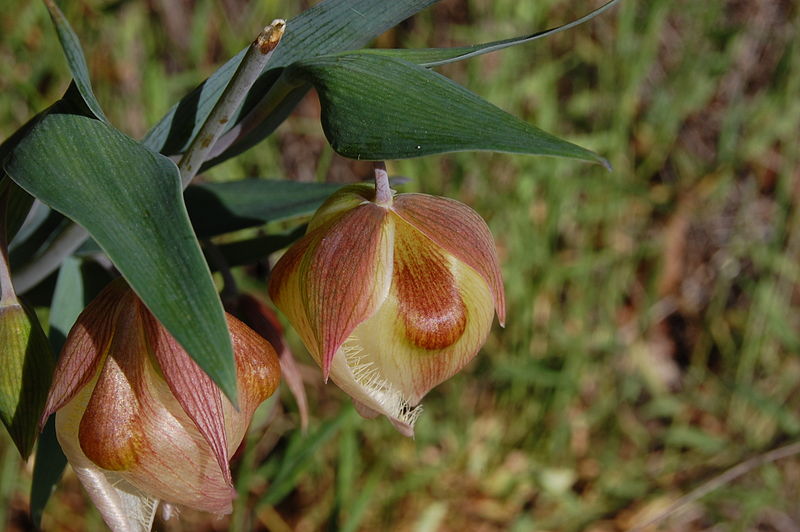
The Fairy Lantern, also known as White Globe Lily, is a perennial wildflower that captures the imagination with its unique, globe-shaped flowers.
This enchanting plant blooms from April to June in the woodlands and coastal hills of California.
As the common name suggests, the flowers of the Fairy Lantern dangle like small lanterns from tall, slender stalks.
The flowers remain closed, maintaining a lantern or globe shape, which is thought to protect the pollen and nectar inside from rain and non-pollinating insects.
Coast Buckwheat (Eriogonum latifolium)
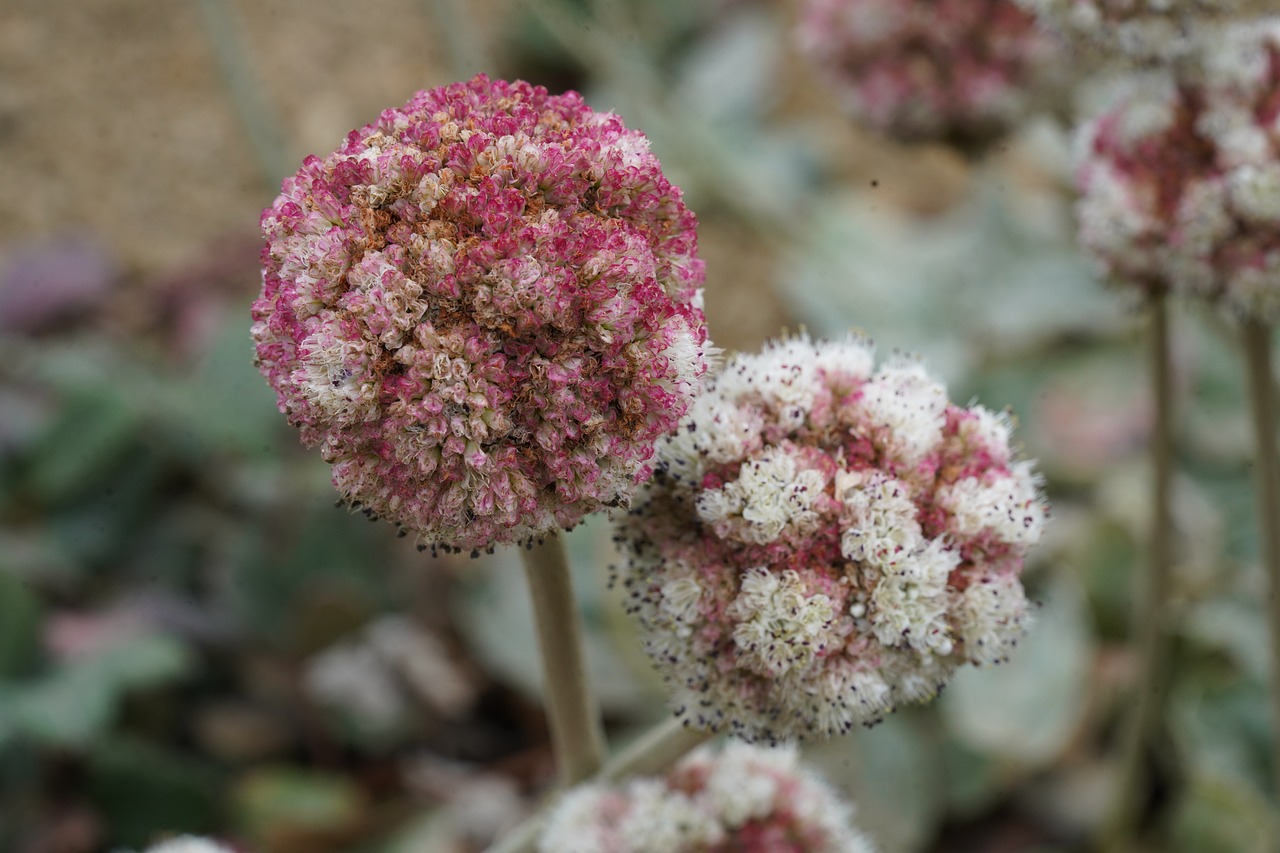
Coast Buckwheat is a perennial shrub native to the coastal regions of California.
It showcases clusters of tiny, white to pink flowers from May to August.
Adapting to dry, sandy conditions, it contributes to the vibrant color palette of the coastal sage scrub and seaside bluffs.
Its nectar-rich flowers attract a wide variety of pollinators, and its seeds provide food for numerous bird species, making it an important plant for local ecosystems.
In the fall, the flowers turn a rust color, adding a new dimension to the autumn landscape.
Blue-Eyed Grass (Sisyrinchium bellum)
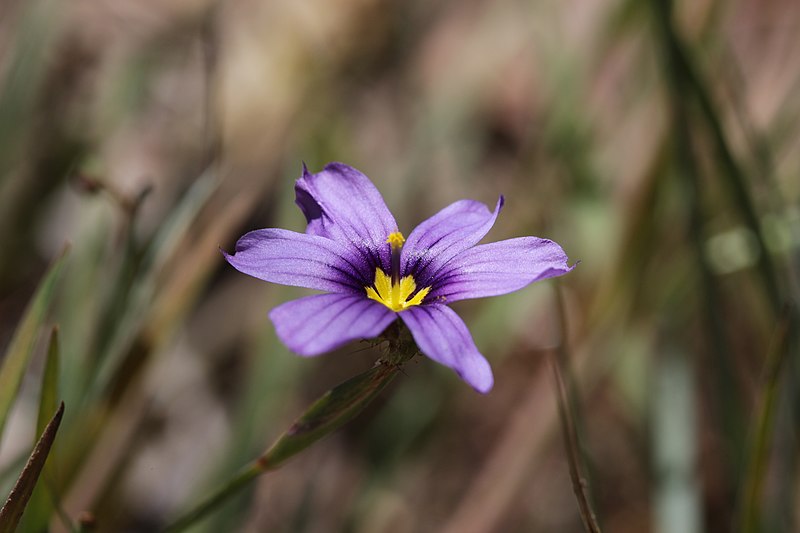
Blue-Eyed Grass, despite its name, is not a grass but a perennial wildflower.
It shows off petite, star-shaped, blue to purple flowers with a bright yellow center from January to June.
Typically found in meadows and grasslands, this charming flower adds a pop of color to California’s green expanses.
This flower has a fascinating habit: it opens its petals in the morning and closes them by midday, especially on hot, sunny days.
This is a strategy used by many plants to protect their reproductive parts from the intense heat and potential damage from the sun.
Purple Owl’s Clover (Castilleja exserta)
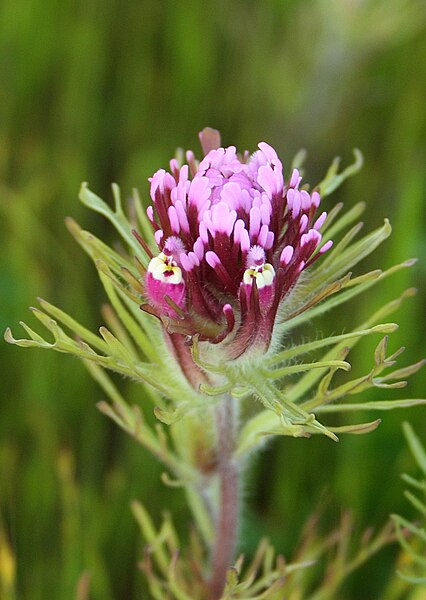
Purple Owl’s Clover is an annual wildflower that decorates California’s grasslands and desert washes with its rich, pink to purple, feathery-looking blooms from March to June.
This plant is a hemiparasite, meaning it can extract water and nutrients from other plants, enabling it to survive in poor soil conditions.
The “feathers” are actually colorful bracts, specialized leaves that surround the small, less noticeable true flowers.
This clever adaptation helps attract pollinators and gives the plant its distinctive appearance.
Yellow Mariposa Lily (Calochortus luteus)
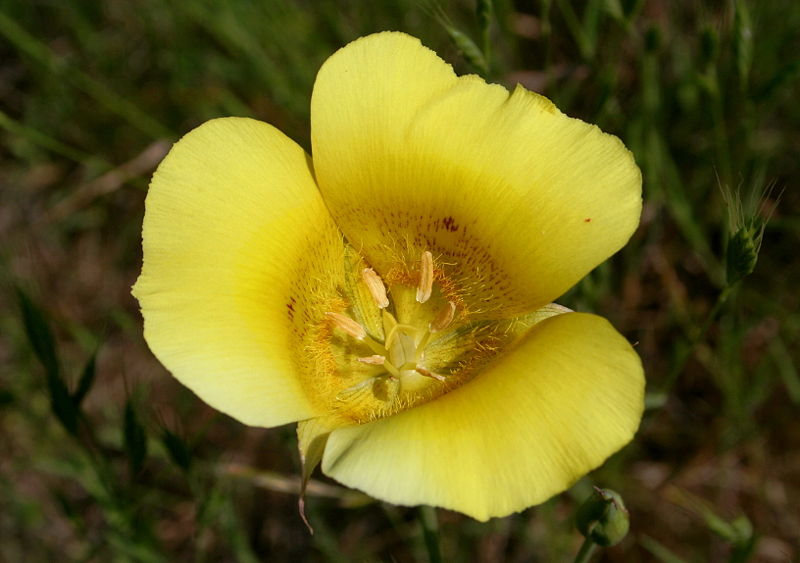
The Yellow Mariposa Lily is a perennial wildflower that graces the oak woodlands and grassy hillsides of California with its bright, sunny blooms.
From April to June, it exhibits large, cup-shaped, golden-yellow flowers with intricate, maroon markings on the petals.
Like other Mariposa Lilies, the Yellow Mariposa Lily’s name comes from the Spanish word for butterfly (‘mariposa’), alluding to the flower’s graceful, butterfly-like appearance.
This, combined with the plant’s ability to thrive in dry, rocky soils, makes it a fascinating feature of California’s diverse floral landscape.
Giant Sequoia and Coastal Redwood (Sequoiadendron giganteum, Sequoia sempervirens)
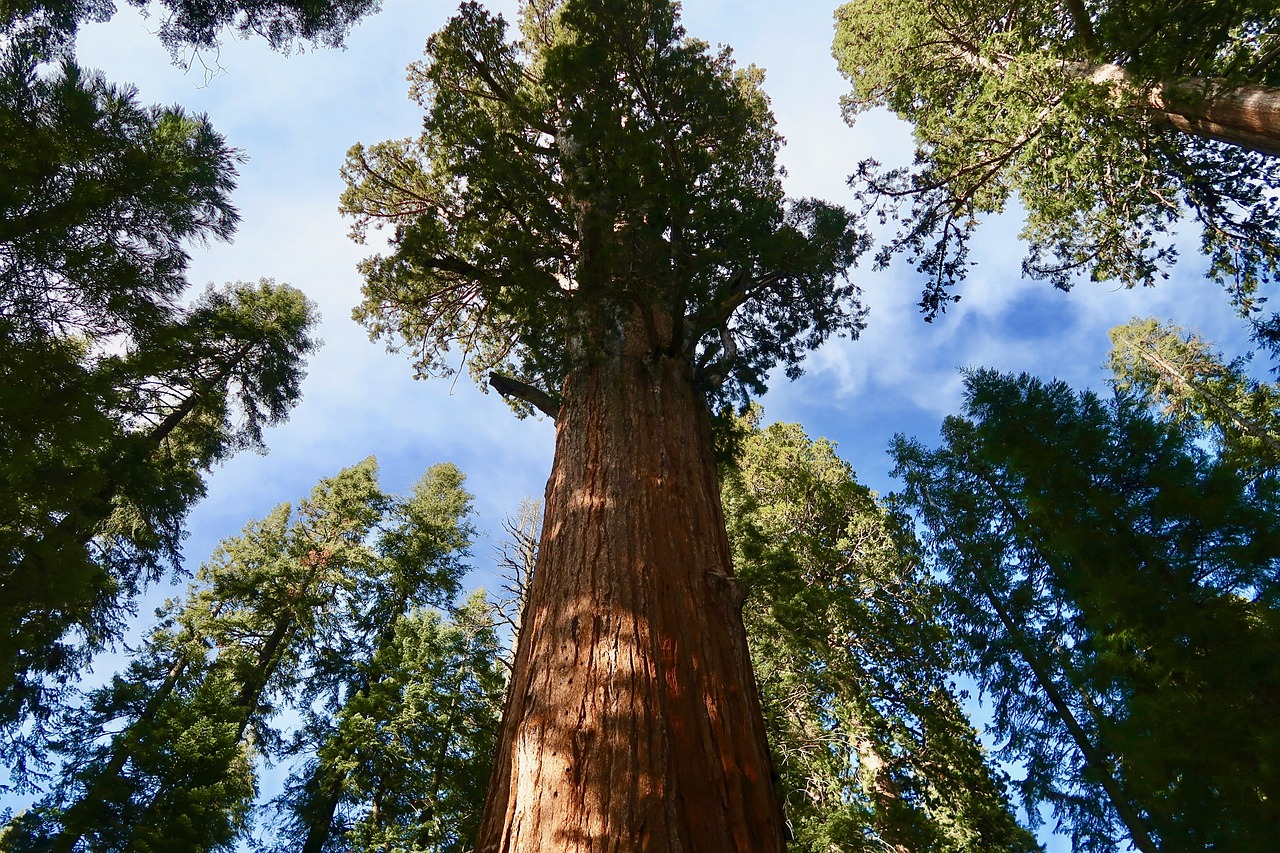
These iconic trees, native to California, produce unique and striking flowers.
The Giant Sequoia, found on the western slopes of the Sierra Nevada, blossoms with tiny, pale green cones in late winter or early spring.
Meanwhile, the Coastal Redwood, endemic to the fog-laden coastline of California, displays delicate, tiny brown cones.
Though their flowers may be less showy than others in this list, their majesty and longevity are unparalleled.
They stand as sentinels of time, with the oldest known individual estimated to be around 3,200 years old!
Toyon (Heteromeles arbutifolia)
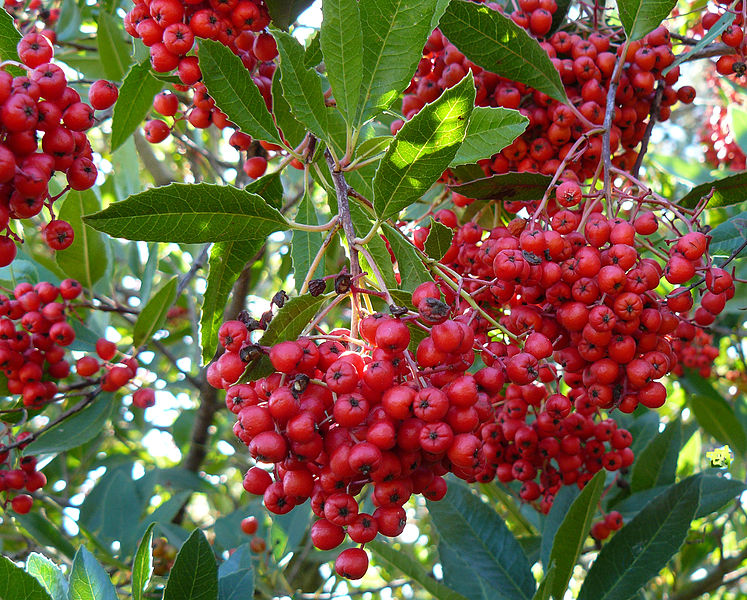
Also known as Christmas Berry, Toyon is a native California shrub that presents clusters of small, white flowers from June to July.
However, it is perhaps more recognized for its vibrant red berries that ripen in the winter, providing a festive touch to the Californian landscape.
Once an important food source for Native American tribes, the Toyon is still cherished by birds and other wildlife.
This adaptable plant is drought-tolerant, thriving in a variety of conditions, from coastal bluffs to inland mountain ranges.
